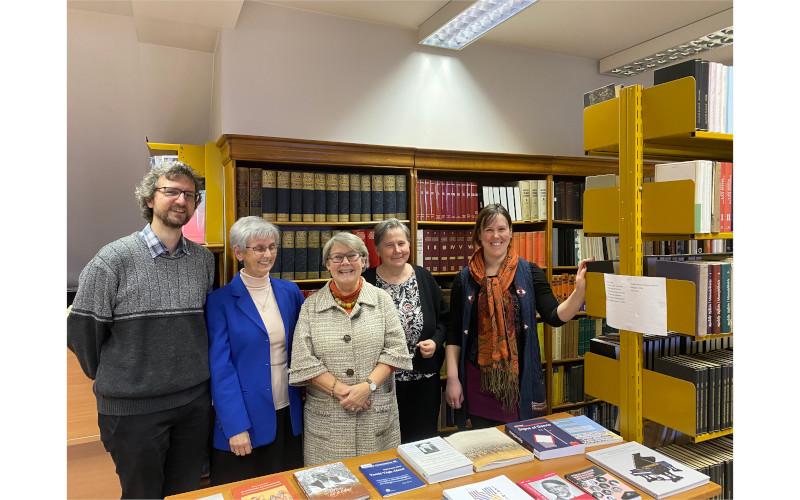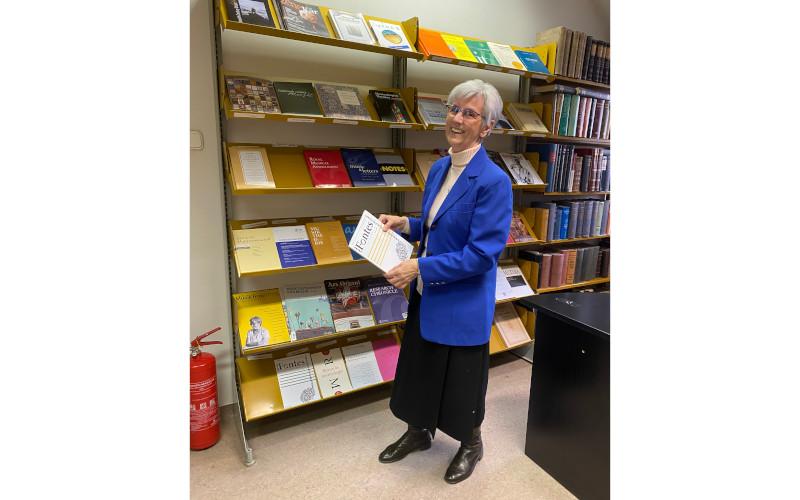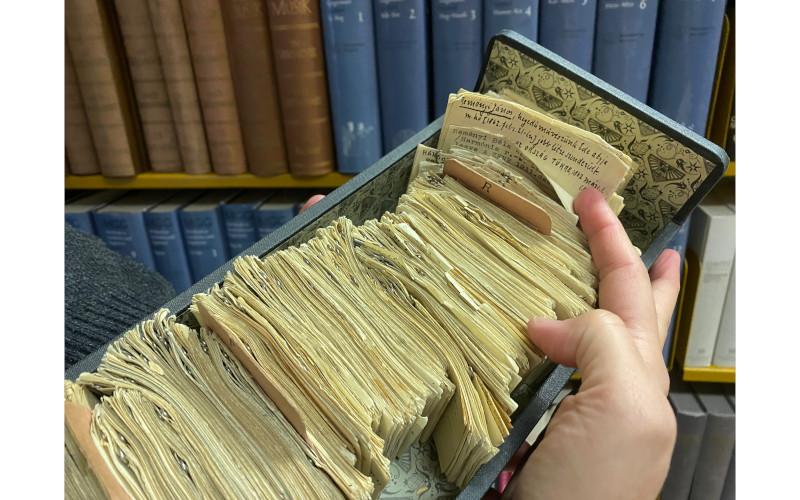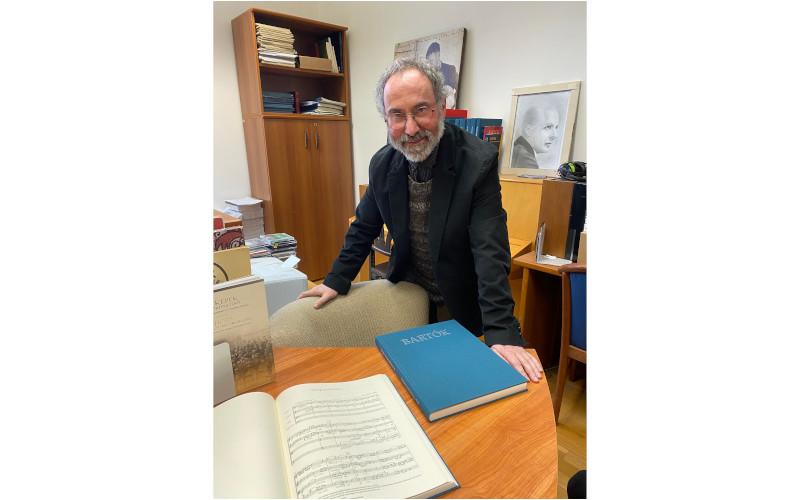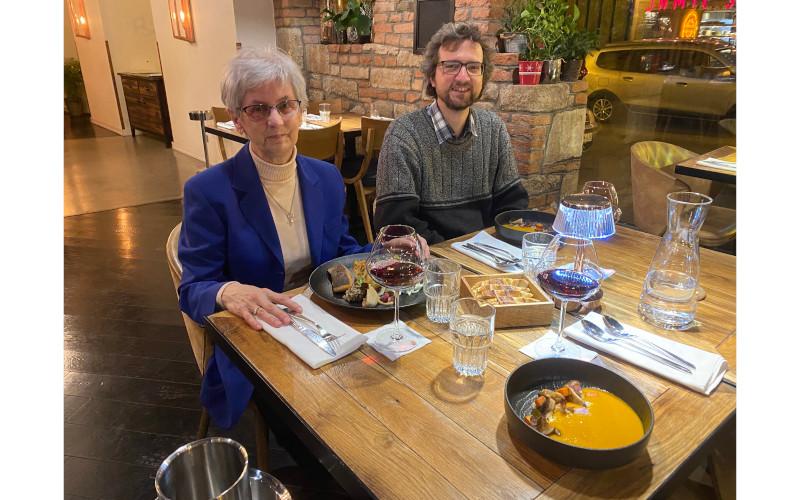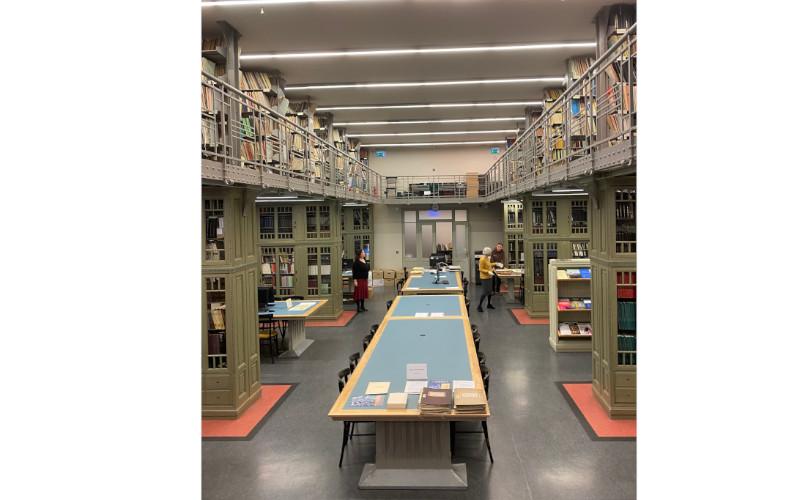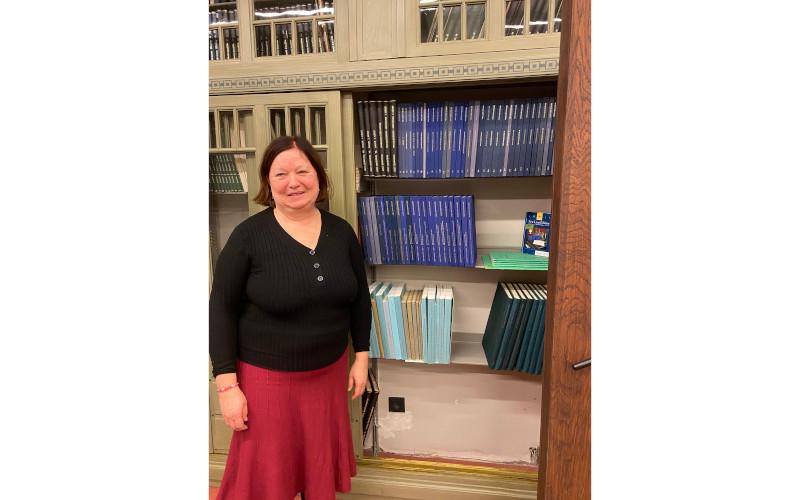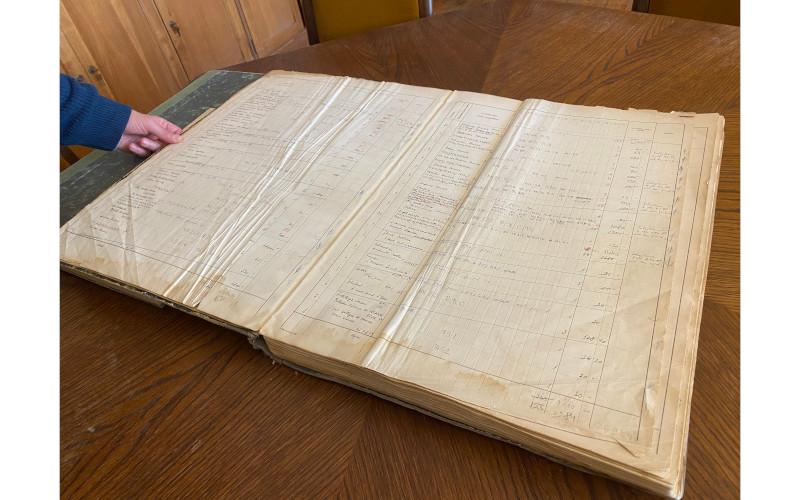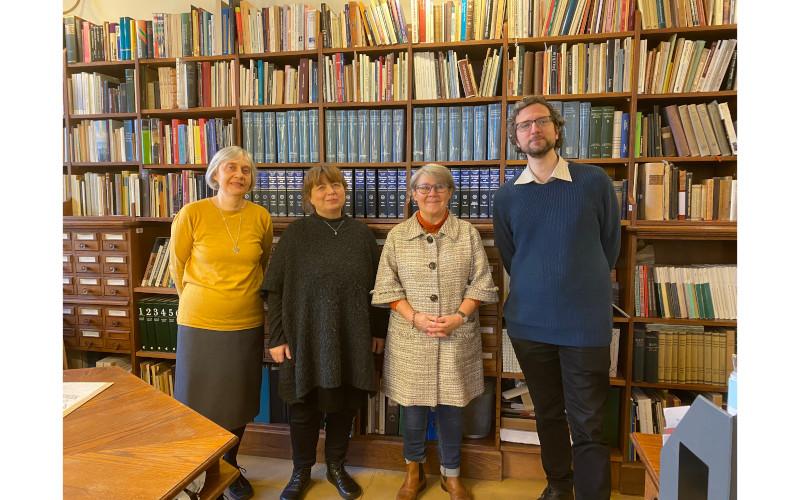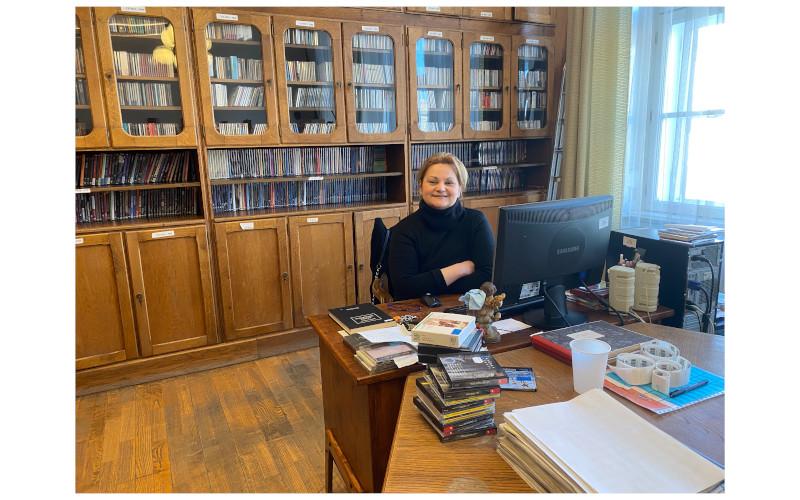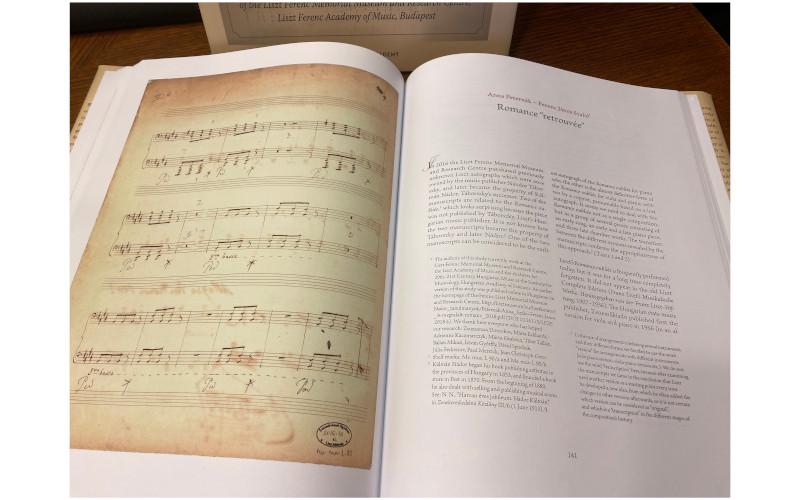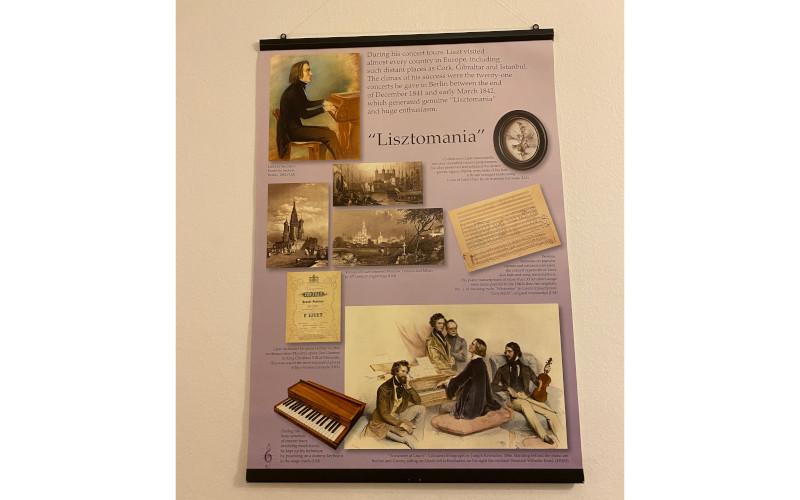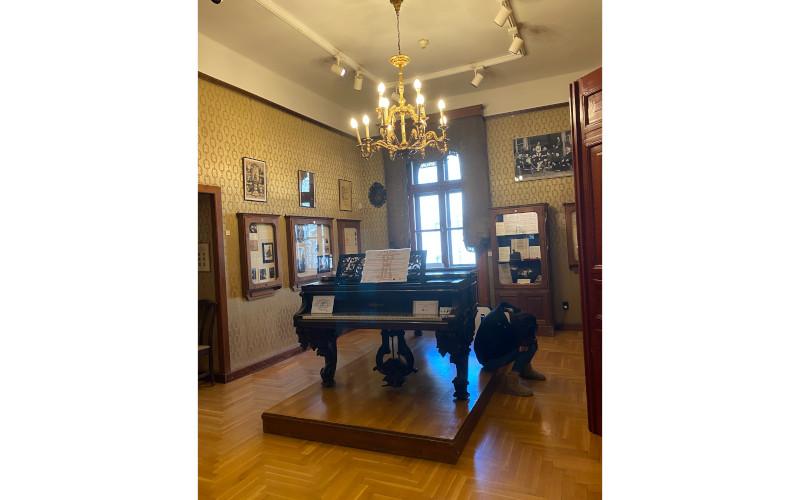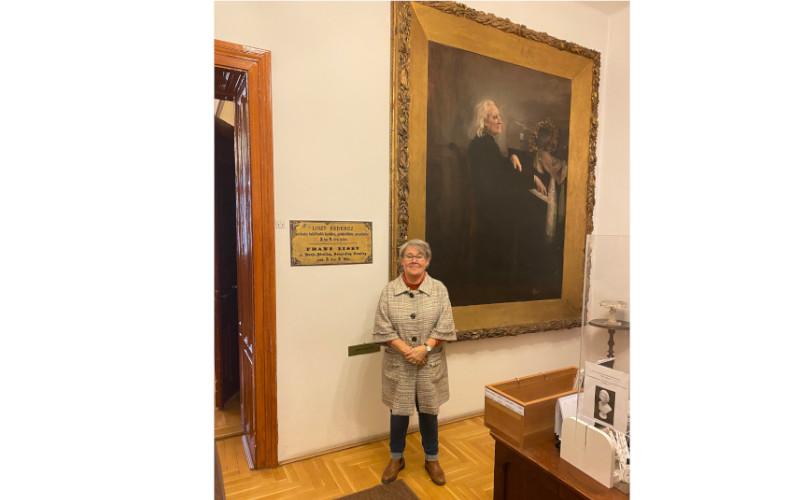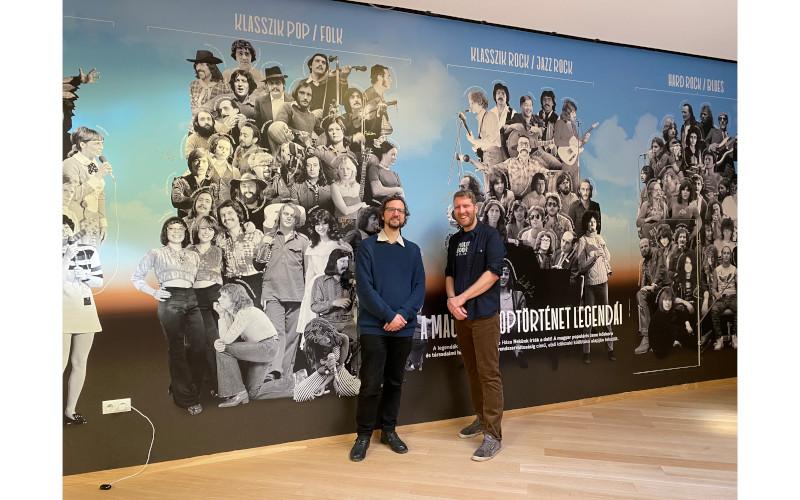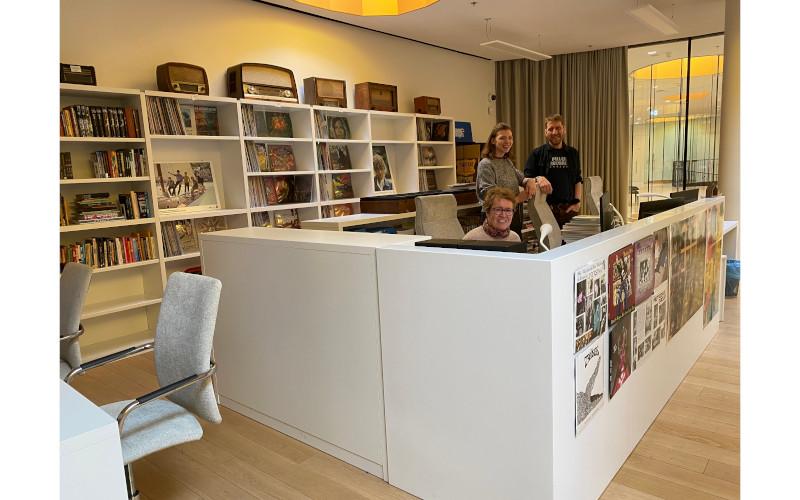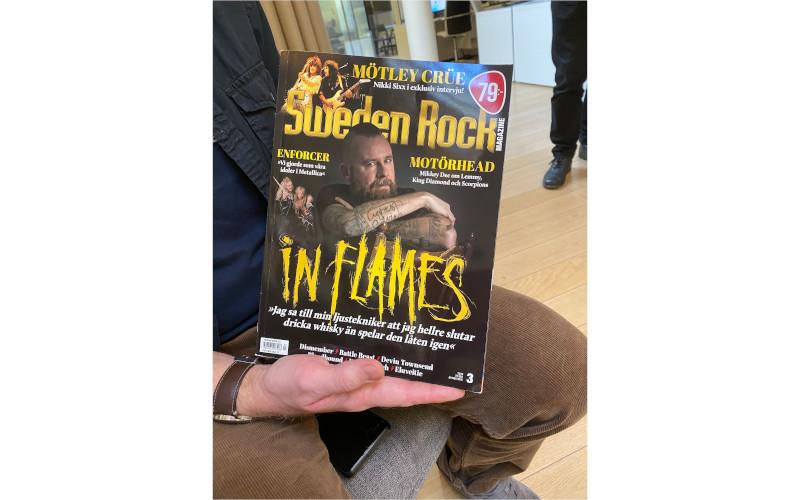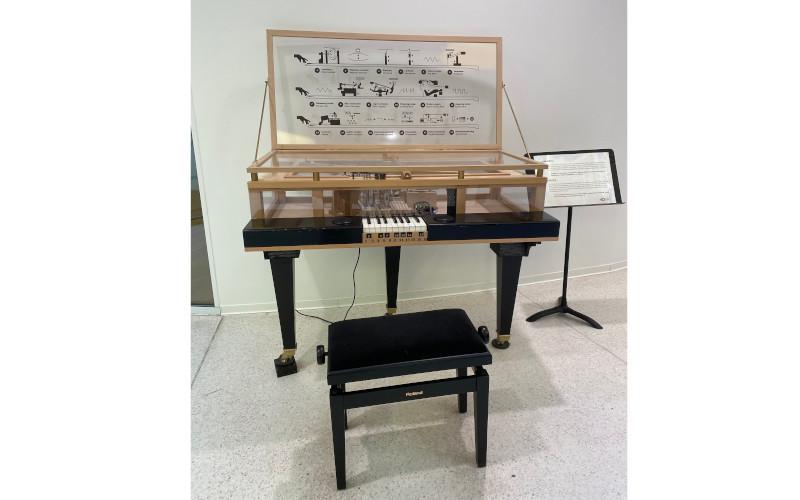After the IAML midterm Board meeting in Vienna 19-20 January, I took the train to Budapest. Unfortunately, it was too cold to travel by boat on the Danube, which has been a dream of mine for a long time. As a person living far up north (in Sweden) I am always amazed when I come to Central Europe and realize how many interesting places there are within easy reach. The train trip from Vienna to Budapest took only two and a half hours.
The aim of my trip was to visit members of the Hungarian IAML branch. The branch celebrated its 50th anniversary in October last year. I was regretfully not able to attend the festivities but had sent a video with congratulatory greetings. My superb cicerone during the two days in Budapest was Ferenc János Szabó, the new Chair of the Hungarian branch. I was very happy that Julianna Gócza joined us during the first day. Ms Gócza was the Chair of the branch for twenty-five years (!) before Mr Szabó took over in 2023. I take this opportunity to forward my heartfelt thanks to Ms Gócza for all her work and dedication to IAML. I have been fortunate enough to meet Julianna at many IAML congresses and it has always been a pleasure.
After my arrival to Budapest, I went directly to the Institute for Musicology, situated in a beautiful building belonging to the Palace on the Buda hill, with a stunning view of the city. The Institute, which was founded under the auspices of the Hungarian Academy of Sciences, belongs now to the HUN-REN Research Centre for the Humanities and has several departments and archives: Archives for 20th-21st Century Hungarian Music, the Bartók Archives, the Department for Hungarian Music History, the Archives and Department for Folk Music and Folk Dance Research and the Department of Early Music History. The Museum of Music History and the Library of The Institute for Musicology also belong to the Institute.
The Institute for Musicology is a member of IAML and Mária Benyovszky, one of the librarians, contributes regularly to Recent Publications in Music. The Hungarian contribution to RILM depends on the availability of funding and Julianna Gócza has submitted many applications during the past decades to secure the continuity of the Hungarian RILM contribution. Previously, the Institute of Musicology was responsible for the RILM work. Nowadays, the Hungarian national IAML branch takes on the professional supervision of the work, when funding is available.
My first stop was the Library of Musicology where Mária Benyovszky and Fanni Ágnes Bácsi gave me a guided tour. It is the most important musicological library in Hungary. The library supports the research carried out at the Institute. It also serves as a reference library for researchers outside the Institute. The library brings together the special collections of the various departments and archives within the Institute - from medieval Hungarian music history to contemporary Hungarian music history. It also contains several valuable legacies.
Apart from the library there are also extremely valuable documents in the special collections belonging to each department and archive. Perhaps the most special of these is the collection of the Archives and Department for Folk Music and Folk Dance Research, which contains the famous field recordings of folk music on a variety of media, from wires to records, tapes and sound files.
I then visited the Bartók Archives, founded in 1961 as a centre for research. I had the pleasure to meet László Vikárius, Head of the Department and the Editor in Chief of the Béla Bartók Complete Critical Edition, published by Henle and Editio Musica Budapest. Mr Vikárius gave me an interesting presentation of the editorial work, with several intricate examples. The Archives have received many donations over the years, for example from the Budapest Opera House and the Paul Sacher Stiftung in Basel. It has the second largest collection of Bartók’s autograph manuscripts in the world. Other important collections that belong to the Archives are documents concerning Bartók’s folk-music studies, parts of his library, correspondence, concert programmes, photos, etc.
Finally, Mr Szabó introduced me to the Archives for 20th and 21st Century Hungarian Music, founded in 2012 (an article written by him about the Archives can be found in Fontes vol. 61/2). The model of the Archives was the Paul Sacher Stiftung. The Archives consist of the legacies of 20th and 21th century Hungarian musicians - not only composers, but also performers, musicologists and institutions. The two most important composer collections are the legacies of Ernő Dohnányi and László Lajtha. Several monographs and articles have been published by the musicologists of the Archives, where Ferenc János Szabó is a research fellow.
The afternoon finished with a lovely dinner together with Julianna and Ferenc. It will be a treasured memory. The evening was ice-cold, and it was a relief to eventually reach my warm hotel and have a rest after an intense, but very interesting and pleasant day.
The following morning Ferenc kindly met me in the hotel lobby and brought me to the Liszt Academy of Music, his second workplace. In the Academy he is a member of the Department of Vocal and Opera Studies, teaching music history and working as a piano accompanist. Ferenc is an alum of the Academy. He told me that almost all pianists in Hungary are students of students… of Liszt! This is also the case with Ferenc. After admiring the fantastic art nouveau interior of the building, including the famous concert hall, we entered the library, where we were greeted by Mária Csanda, Deputy Director of the Library, and Klára Somogyi, Research Librarian and former Director of the Library. Ms Somogyi is also President of the Music Section of the Hungarian Librarians' Association. They informed me about the interesting history of the Academy and the library itself.
In 1875 music education began at the Academy of Music, with Franz Liszt as the director (which means that the Liszt Academy will celebrate its 150th anniversary in 2025). The students could choose to study either composition or piano. Liszt was the piano professor while Ferenc Erkel taught composition. A separate place for books and scores was part of the Academy from the very beginning. The foundation of the library’s collections was donations from publishers and even a gift from the royal court. The yearbook from 1884/85 listed around 4,300 volumes of books and scores in the catalogue. In 1907 the Academy moved to the present building with a modern space for the library. The library has always been a valued asset and already in 1922, a library regulation was introduced, which specified the duties of the librarians. Today the library holds nearly 500,000 scores (including several critical editions), 70,000 books, around 100 journals, about 6,000 CDs and 1,500 DVDs. A significant part of the collections consists of the legacies of many Hungarian composers. The library serves the students and staff of the Academy and is also open as a reference library for other researchers and the general public.
After visiting the building on Liszt Square, we had a ten minutes’ walk to the “old building”, where teaching takes place for church music, chamber music and organ, and where you find the Audiovisual Collection of the Library. This is also where the Liszt Ferenc Memorial Museum and Research Center is situated. The Center is a hub for Franz Liszt research and everything in the reference library has a connection to the composer and Hungarian music of the 19th century. Musicologists from all over Hungary, as well as from abroad, are frequent guests. The legacy of Liszt belongs to the museum, and everything is digitized. There is a close collaboration between the Research Center and the Museum. I was delighted to be introduced to the librarians Adrien Csabai in the Research Centre and Katalin Horváth in the Audiovisual Collection. I was also introduced to Mária Eckhardt, the former director of the Liszt Memorial Museum, who is now a Presidium member of the Liszt Society in Hungary. All volumes of the Society’s journal are available online on the website of the Society.
But not everything in Hungary has to do with Béla Bartók, Franz Liszt or historical buildings! The final visit during my stay in Budapest was the Multimedia Library and Club which focuses on the history of Hungarian popular music. It is the latest member of the Hungarian IAML branch, and I was glad to meet László Záhonyi and Borbála Szakács. The library has books on pop culture, records, films, periodicals, radio and television shows, posters and a photo gallery. It also offers the visitors access to the database of the Hungarian Record Company (Hungaroton) where they can listen to folk, pop and rock music. Apart from traditional services the library functions as a club and regularly arranges concerts. The Multimedia Library and Club is a part of the newly inaugurated House of Music, which is a spectacular building in the Budapest City Park, designed by the Japanese architect Sou Fujimoto.
I am grateful for this wonderful opportunity to meet so many friendly members of the Hungarian IAML Branch – a branch that clearly is full of vitality. The two days in Budapest were a little hectic, but extremely rewarding. I wanted to share my many impressions, and this is the reason why the report has become much too long… I thank all readers who reached the very end of this text for your patience!
- Like Facebook
- Partager sur Facebook
- Identifiez-vous pour poster des commentaires


